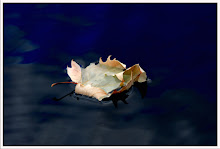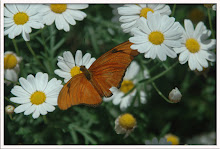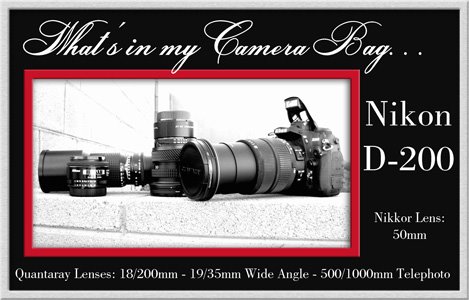When Kathy first asked me to teach a class on photography my first response was NO! I am not a trained photographer and I could never answer all of your questions about the technical part of photography (i.e.: apertures, f-stops, white balance, etc). But Kathy assured me that was not the type of class she, or you wanted. Instead, she wanted me to help you learn how to put more interest, more heart if you will, into your photographs.
Preparing for this class was very hard for me. How would I put into words and teach you how I put the heart and emotion I like to have in my photos? I have come to realize that explaining my vision and heart is similar to explaining why you love someone. It is often difficult to put into words an emotional response. This class really allowed me to look at my own style and vision of photography in a new light and allowed me the opportunity to examine my true motives when I take a photo. I have discovered that the true foundation of my photography is capturing the “feeling” and not the image.
Discussion:
Shoot what you love and tell the story -
We all pull out our cameras on special occasions, like birthdays and Christmas. The rest of the time our camera sits in a drawer, on a shelf or in a protective camera case. We treat our cameras like we treat our good china. I have always lived by the rule that everyday is a special occasion! I keep my good china accessible and I use it whenever I feel like it. I eat pizza on it as well as holiday meals. It just makes me happy to do it - and I am worth it! The same goes for my camera. I keep it out and at hand everyday and I use it almost everyday. There is something special that happens everyday because I have a special family and I live in a special world. In other words I shoot the things I love and I tell their story with my images. My family and my world has many interesting stories to tell, And the stories don’t just happen on those “special occasions”. If you reserve your camera for just such stories, this is the story your photo albums will tell. . . We were always happy. We were always well dressed and clean. We lived in a world full of Christmas trees, cakes and balloons.
Holiday and special occasion photos are often our worse photos anyways. We are trying so hard to be “in the moment” and also trying to catch the moment, and get the food ready that we don’t get great photos. I find that on Christmas morning I am so interested in watching my family open their gifts that I forget to pick up my camera and shoot. On the other hand, a random Tuesday morning in May I might take 30 photos of the dogs playing with a stick in the yard or Vittoria chewing on her foot. These are the photos I cherish, and the moments that are more easily forgotten than Christmas morning.
My challenge to you is to make a list of the people and the things in your life that bring you joy and go out and shoot them like crazy! Tell their story, and capture your feelings about them with your camera. Get your camera out and leave it in a central place in your home and use it!
Here is a list of some of my most favorite things to photograph. . .
Vittoria - Lizzy - Gary - Bryanna - Calla Lilies - Anything Fall - The Sky - Storms - My dogs - Food - The Ocean - Point Loma - Trees/BIG trees - My Doodle’s things
Get up-close & personal -
One of the most common mistakes made when taking photos is not getting close enough! This is one of the hallmarks of my photography style. You might say I really “get in your face”. I want to see (and remember) what your eyes looked like, I want to capture that twinkle or that tear. I want to see all of the details of your smile, your fingers, maybe even your toes. I want to have all of these minute details saved forever.
Almost every camera, at every price point has some sort of zoom on it. Use it! Use it when you are close up to get all of those little details. Use it when you are far away so you can be that “fly on the wall” and capture moments and expressions without being intrusive or ruining the moment.
The basic rule of thumb here is Fill Your Frame! Actually open your eyes when you shoot, and look at everything that is in your viewfinder or on your view screen (note: get in the habit of checking the 4 corners of your viewfinder for distractions). Make sure everything that you want is in there and nothing else! This is what I call “identifying your subject“. When someone looks at your photograph for the first time, there should be no doubt as to what the subject is. They should not have to wonder if you were shooting a picture of a messy room, Bryanna or Vittoria on her first Christmas.
 By making Vittoria the largest part of your photo, you are leaving no doubt as to what your viewer’s focus should be on. Filling your frame in this way helps eliminate distracting backgrounds and things that have nothing to do with the story you are telling.
By making Vittoria the largest part of your photo, you are leaving no doubt as to what your viewer’s focus should be on. Filling your frame in this way helps eliminate distracting backgrounds and things that have nothing to do with the story you are telling.  So, get close, really close!
So, get close, really close!You can get closer 3 ways,
move your subject,
move yourself
or move your camera (the zoom).
Let’s take “filling our frame” a step farther and let’s look beyond the specifics of the subject and find the universal connection your subject has with all those that will view your photo.
The Specifics of a photo are what we call, Documentation Style photography. This style of photography answers specific questions about the subject, i.e.: who - where - when. It will give you specific information about a specific person, at a specific time, at a specific place.
Example: A full, straight on picture of a bride and her sister has specific qualities. It says “April helping Angie get ready for her wedding“. This photo documents that Angie was getting married.

The Universal Connection, is what we call Interpretation Style photography. Interpretation asks almost as many questions as it answers and allows the viewer to determine the answers. As well as asking questions, it tells a story and shares your emotions about the subject. It is also known as photojournalism.
Example: Now, lets fill our frame up with just Aprils hands as she laces up Angie‘s wedding dress. We have a universal connection here. We see things like “pure, beginnings, love, patience, help“. These are things that everyone can identify with. Things that make your photo interesting to everyone, even if they don’t know the bride or her sister. This photo allows your viewer to make their own interpretation of the photo and hopefully he/she feels your emotions.

A Picture is worth a 1000 words. . .
There are pictures. and then there are pictures that capture the heart of the moment. These pictures need little explanation. These pictures seem to speak a thousand words. We all want to have these types of pictures in our scrapbooks and albums. To have a photo that 'speaks' is the epitome of photography.
I love to capture moments with my camera. These moments are what I want to remember. Yes, I want to remember what my children looked like, and what our home looked like, and what presents they received on Christmas, but there is so much more to our life than that. Our lives consist of everyday things and daily memories. Our lives are full of seconds of inspiration, minutes of laughter, hours of fun, and days of simply being together. I want to remember these times when I look back at our family albums several years down the road. By simply using your camera to capture what touches your heart, you capture these types of pictures. Soon, what started out as just picking up your camera and snapping random shots, will evolve into something that means so much more to you.
When I first started taking pictures, I would just carry my camera to the important events, hoping to capture a few good shots of the day. Most of the time I'd capture the 'day', but few 'good' shots. When I became more interested in scrapbooking, I started to pay more attention to the pictures that I was taking. I became aware of exactly what I was taking pictures of. And you know what? I take MORE pictures now than ever before. I realized that I didn't have enough pictures that told the stories I wanted to tell. When I realized that, I made a decision NOT to put my camera away. Instead I leave it within reach at all times. I even bought a smaller one to carry with me for those unexpected “gotta have it” shots.
Photojournalism is simply expressing your 'journaling' through your photos. It's candid photography that captures the essence of the people, places, or things. It's more than a shot of child at a beach. It's a picture of that same child jumping up and running into the waves, splashing through the tide. That picture somehow brings back the smell of the salty water and the heat of the sun. That picture lets you remember the laughter and excitement of the day. That picture will speak a thousand words years from now.
A few tips to send you along your way to creating "talking" photos:
Get closer. To capture those little details, don't try to fill the camera lens with the entire subject and surroundings. instead, try filling your lens with what you want to capture.
Carry that camera with you. You never know when a moment to remember will happen.
Think about the day or event. What do you want to remember? If you want to remember the laughter, capture it. If you want to remember the relationships, capture them. Capture what you want to remember. This will be the 'essence' of the day.
Don't make your subjects look at the camera and say cheese. You'll get much more realistic and natural faces by just letting them do what they do naturally.
Now, go capture the moments!


















1 comment:
Hi Marta, I tried to put this message on your blog, but it wouldn't let me because I don't blog, etc. So am sending it to you this way:
Marta,
What a fun class! I came home very inspired, checked out this blog, and made copies of your notes (which are excellent, by the way). I am anxious to clean out both memory cards and start taking photos. I, also, want to learn to upload my photos to Costco. Thanks for challenging me to do all of this. Thank you for all your hard work in getting the class together, the special blog done, and the book kits to put our final photos in. Great job! Kay
Am looking forward to next class and our Friday together. :) Kay
Post a Comment